How to Troubleshoot Electric Fence Problems and Then Fix them!

![]()
![]()

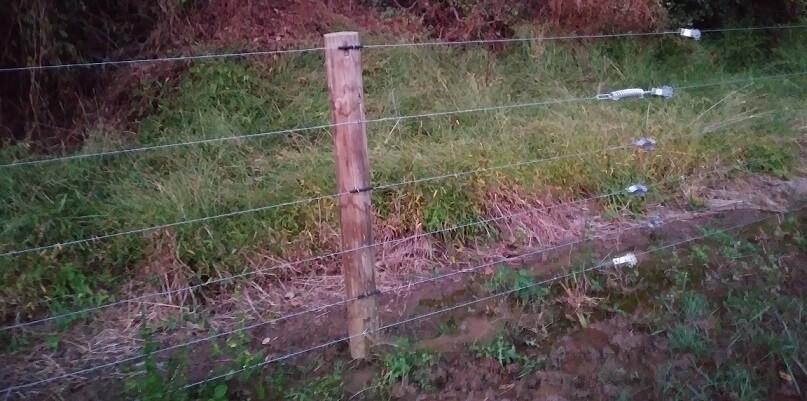
I have approximately 20 acres enclosed by a high tensile electric fence. I put it up myself and have been troubleshooting this electric fence for about three years now. These are my lessons learned about how to troubleshoot electric fence problems.
It is a constant struggle to keep an electric fence working. Between trees falling on it, weeds growing up it, lightning striking it, and wear and tear on the insulators, you can expect to maintain it a few hours each month. The good news? This is a great excuse to go on a walk with your dogs (while carrying a bundle of tools with you).
Here are all the ways my fence has broken, and how I fixed it, and how I am trying to prevent future problems.
First question: When you put in the fence originally, was the charge good?
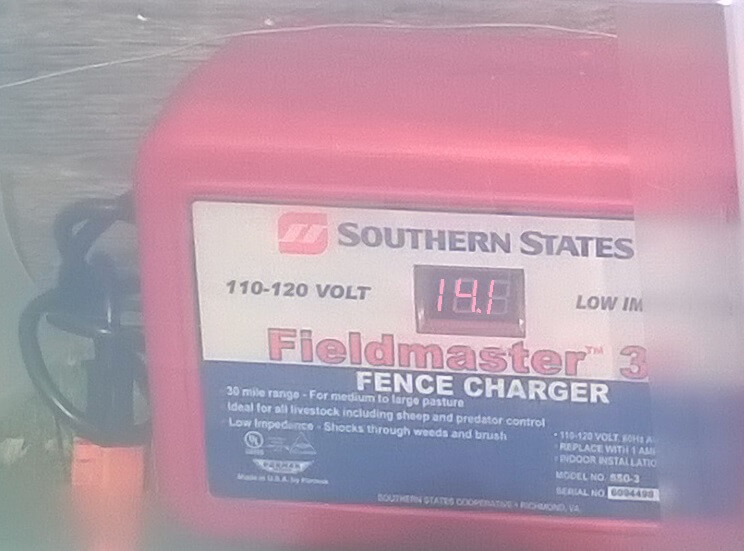
When I first put in my fence, I had almost no faults. My fence charger showed 14.1, which I think translates to 14,100 volts. To put things into perspective, these fence chargers are effective deterrence against cattle down to a reading of 2.0. Horses will avoid the fence down to 0.5 or even lower.
If you answered NO – that you never had a good charge on your fence, then you need to ask whether your wires are insulated properly, or whether there are major design flaws. This may not be fixable without rebuilding some of your fence.
In particular, be careful how you string the brace wire on your corner posts. If you aren’t careful with how you route it, this wire will lie against your fence wires (causing a short). Normally you want the brace wire to be on the inside compared to other fence wires.
If you answered YES – that you once had a good charge (like the picture of the fence charger above), but over time your voltage has dropped, then it should be fixable. Read on!
Is your electric fence grounded correctly?
Electric fence chargers need to be connected to the ground with a long metal rod. Most manufacturers say that you need three 8′ (2.8m) ground rods pounded into the ground, spaced several feet (2m) apart. If your fence is less powerful during dry weather, it is a sign that your grounding system needs help.
Tips for testing your electric fence
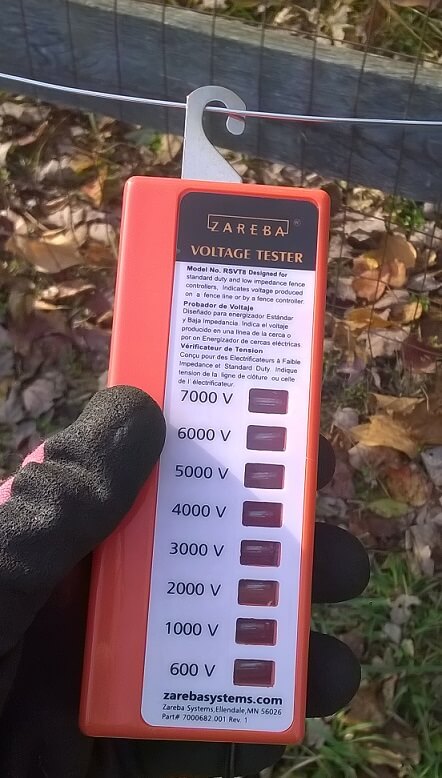
You can purchase a voltage tester at your local farm store. Hook the top end to your electric fence, plug the bottom end into the ground, and see whether lights flash. This is a slow, annoying way to test your fence because you have to plug it into the ground each time. More expensive testers will show you a digital readout instead of lights.
No fence tester? No problem.
A word of caution: This advice is from my own experience. I’m not an expert. Perform at your own risk. If you are wearing a pacemaker or getting zapped would be really bad, don’t do any of these things.
Electric fences for farms send very short “pulses” of electricity across the wire. Normally one pulse per second, and each pulse lasts a tiny fraction of a second. This is meant to allow the animal (or human) to get away from the fence before they are shocked again. If you have a fence charger, you probably have heard it clicking like a metronome. Each click is a pulse.
Electric fences are not meant to do permanent harm to animals (or humans). The voltage can be very high, but the amperage is low. Amps is what causes harm when we get shocked. Amperage should ideally by around 1. Voltage should be around 2,000 to 15,000.
I’ve been shocked at full strength (10,000+ volts) a few times. Not recommended!!! My most memorable shock actually left small entry and exit marks (they looked like small ashy circles with a burnt dot in the center). I haven’t had any long-term damage but I don’t want to repeat the experience!
The Badass Method for testing electric fences

Ye olde rubber boots, AKA “Muck boots”. Available for $20 at your farm store. They provide significant protection against shocks.
Find some tall rubber boots and wear them. Assuming they don’t have holes, the grass isn’t higher than your boots, and you aren’t touching anything that could act as a ground, you will be mostly protected against shocks. This means that you will feel the zap in your finger, but it won’t go through your entire body like a lightning bolt. I have been known to test fences directly with my hand while wearing rubber boots.
This method is very impressive to people who don’t realize you are wearing rubber boots.
The Grass Method for testing electric fences
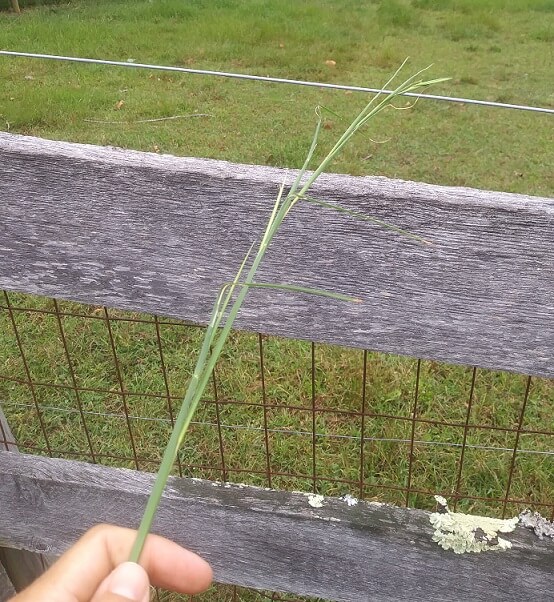
Start with a long blade of grass (at least 6 inches long). Hold one end, and lay the other end on your electric fence. You probably won’t be able to feel anything at max extension.
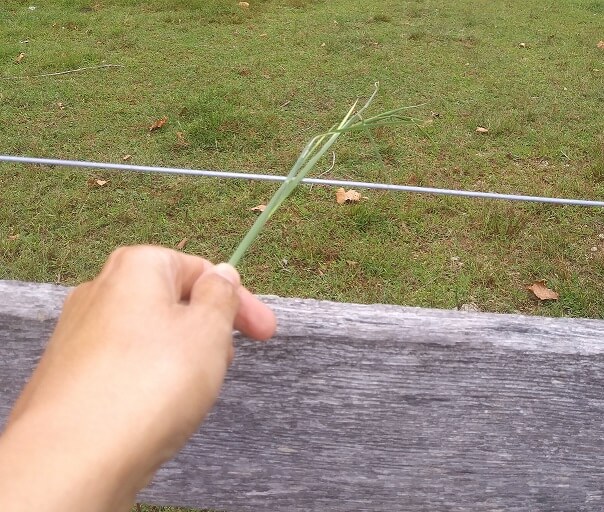
Slowly choke up on your grass stem. As you get closer to the fence, you will start feeling a very light zap in your fingers. This means the fence is on. Stronger voltage and wearing (or not wearing) rubber boots will change the distance you can feel a zap.
Use the grass method to test your fence when you don’t have rubber boots or you want to avoid pain. Pluck a long stem of green grass (ideally 10 inches or longer), and hold one end of it. Dangle the other end against your electric fence. Normally you won’t feel anything at this point. Slowly push the stem toward the fence so that there is less distance between your hand and the fence. At some point, you will start feeling a very faint zap. The closer you are before you feel the zap, the lower voltage and/or the more conductive your grass stem is.
Troubleshooting your electric fence
Did your Fence Charger stop clicking, and looks powered off?
Lightning strike on the electric fence destroys the charger
If you had a thunderstorm last night, I have bad news for you. Lightning probably hit your fence and traveled along it to melt the charger. Your charger is dead.
What can you do to prevent this in the future?
- Get a good warranty on your fence charger and keep the paperwork handy. Make sure the warranty protects against lightning strikes.*
- Install a lightning arrester on your fence about 50-100 feet before it connects to the charger.
- Use a surge protector between your electrical outlet and the fence charger.
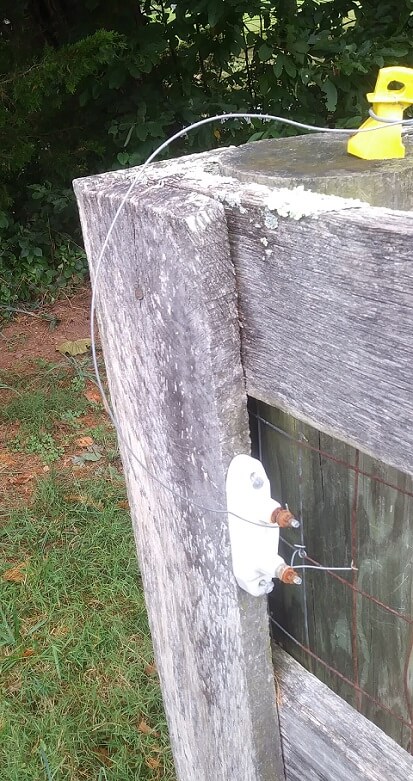
I use a Zareba Lightning Arrester. You connect one side to your electric wire, and one side to the ground. When lightning hits your electric fence, the electricity travels to this spot and then shortcuts to the ground by arcing across the arrester. As long as your fence charger is 50+ feet beyond this spot, it avoids the electricity.
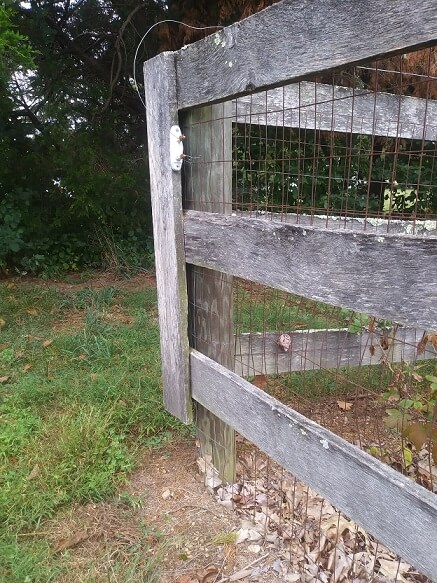
In my case, my non-electric fence is buried in the ground, so it works as a ground rod for my arrester. If you don’t have something like this, you should either bury your ground cable or install a ground rod.
My first year with electric fences, I had two chargers destroyed by lightning. I installed an arrester and haven’t had a problem in about 18 months.
* Don’t be like me and wait for shipping on a replacement charger. Get a new fence charger right away and install it. I had a cow escape my fence four days after the charger died. That stress was NOT worth saving a hundred bucks.
Blown fuse on the fence charger
Most fence chargers have a fuse inside them. This fuse limits the amperage, which is an important safety measure (getting electrocuted is not good). My fence chargers all use standard 1-amp fuses. These can normally be bought on the same store aisle as your charger. If in doubt, just replace it.
Lightning and blown fuses: When lightning hits a fence charger, the fuse will often explode. If you open up the fuse and shards of burnt glass fall out, it isn’t worth trying to fix it. Warranty repair and/or buy a new charger. I once spent a few hours trying to remove the pieces, clean out the compartment, and put a new fuse in – guess what, it didn’t work because the charger was melted on the inside.
If your fuse is just blown (it will look like it has smoke inside the glass), definitely try replacing it! This will often fix the issue. Since installing a lightning arrester, I’ve started to just get blown fuses instead of melted fence chargers. Big improvement.
Your power source isn’t working, so your fence charger is off.
If you use AC for your fence charger, make sure the power outlet is working. You may have to flip the breaker.
If you use batteries (solar or direct current) for your fence charger, make sure the battery is plugged in, the connections are polished, and your battery is charged up. The battery could also be frozen or missing battery fluid, etc.
Random note: I tried solar and found it lacking in juice. Not good for cows, they will ignore little zaps. I’ve only seen solar used successfully with horses.
GFCI outlets and electric fence chargers.
Were you amateur enough to use a GFCI outlet to power your fence charger? (I did this at first). Housing codes require that external power outlets are all protected by GFCI. Unfortunately, the act of zapping a critter is exactly what GFCI triggers on. It can feel the power flow into the ground and will shut down the circuit.
You need to get your charger off GFCI or it will keep shutting off. Luckily, this is pretty easy to do. Replace the GFCI outlet with a non-GFCI one. Then take steps to protect this outlet so that people can’t electrocute themselves by using it. For example, I have my outlet in a box that is physically locked shut to prevent access. You are responsible for complying (or not) with your local housing code.
Did the voltage on your electric fence drop to zero suddenly?
Whenever you have wires in close proximity to each other, they are likely to touch. Wires have an amazing way of breaking through anything you put in their way (such as plastic insulators, electrical tape, wood blocks, and zip ties). If your electric fence connects to a ground wire, your charger reading will suddenly drop to 0.
Pro tip: I find it more effective to pull wires away from each other (such as using zip ties or wire to pull non-energized wires into a bundle), than to put an insulator between touching wires.
If your voltage was humming along at say, 4.7, then suddenly dropped to 0, you have a direct ground problem.
Look for cables that fall and touch either the ground or a non-insulated wire.
This means that you have an excellent conductor (such as a metal wire) connecting directly from your electric fence to the ground. Or part of your electric fence has fallen to the ground. Or you use T-Posts and one of the insulators broke so the fence is touching the T-Post directly. This is an OK fix for cables that want to touch each other. At first, I tried to use electrical tape as an insulator. The shocks melted through the tape after a few months. This insulator will last a year or two before natural friction (caused by wind, storms, etc) wears through it.
A better solution would be to pull the brace wires together in the center using zip ties or flexible wire. This will keep the brace wires from touching your fence wires, and last much longer. I changed to this method (pulling brace wires together in the center) after a few years.
When you are putting in a new fence, there is a way to string the cross-brace wires so that they don’t touch your energized wires. I didn’t realize that when I was putting in the fence, so this year (2020) I finally re-strung the bad ones.
Is the fence voltage slowly dropping over time?
Fix electric fence – stuff is touching your wires!
When your voltage slowly drops, it means that you have lousy conductors touching your electric fence. A small amount of your voltage is traveling through these conductors to the ground, and is lost.
- Long grass is the most common. I weed spray my fence lines with long-term weed killer to prevent this issue. It is tricky (and dangerous) to mow around high tensile fences, so I avoid it.
- Fallen trees or limbs across the fence. If you live in a wooded area, you will have stuff fall on your fence.
- Spider webs across the fence??? I think I’m just paranoid, but it makes me crazy when I see spider webs bridging between electrified and non-electrified parts of my fence.
- Water or ice. If you have enough rain or sleet, the ice can bridge around your insulators and cause a temporary dip in your voltage.
Fix: Are your electric fence insulators broken?
Insulators are the plastic pieces that go between wood posts and your fence, T-posts and your fence, trees and your fence, or your fence and other wires. A well built electric fence should have insulators between the fence wire and everything else it touches, except for air. Over years, your insulators may fail. The metal staples used to attach insulators to wooden posts are the main reason for insulator failure.
Important: Wood is not a good insulator.
If I were to re-do my fence, I would be way more careful about how I hammer in the staples. It is extremely important to not dent the insulators.
Metal staples break electric fence insulators over time
You need some sort of plastic or ceramic insulator between your electric fence and the fence posts. Especially when it has been wet, your fence posts will conduct electricity to other strands of the fence, and/or to the ground.
This is a failed insulator on my property (the black tube). It was stapled to the tree, the tree grew, the staple wore through the plastic. The fence started losing power into the tree as a result. The yellow insulator is my fix. It is a 1×6″ T-Post insulator that I stapled into place. This should last a long time.
Finding staples that cause a ground fault
- Metal staples can dig through plastic insulators over time. When this happens, the staple contacts your electric fence wire and provides a conduit to the wooden post. This is a major problem with my fence, and is hard to diagnose. The way I look for it is to touch each metal staple with my finger (see The Badass Method above) and if I feel a zap, it means the staple has worn through the insulator. To fix, use a screw-in insulator instead.
Testing to see if the staple has degraded the insulator. If the staple has broken the plastic and is contacting the electric fence wire, you will feel a zap in your finger. Or get a shock, if you aren’t wearing rubber boots.
Testing another insulator on an end post. When I built the fence, I didn’t realize that staples will wear through insulators over time. Try not to dent the plastic when you are hammering. End and corner post insulators should be held in place by upper and lower staples that are not tight.

